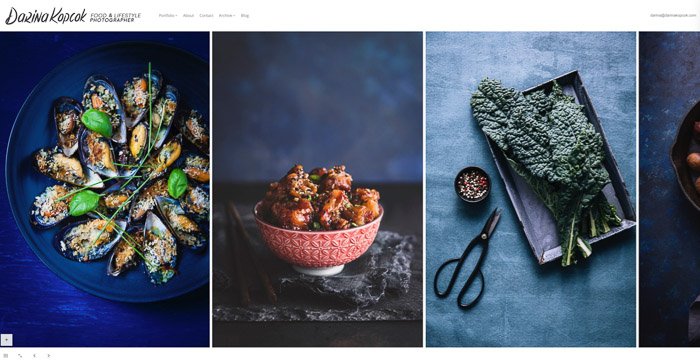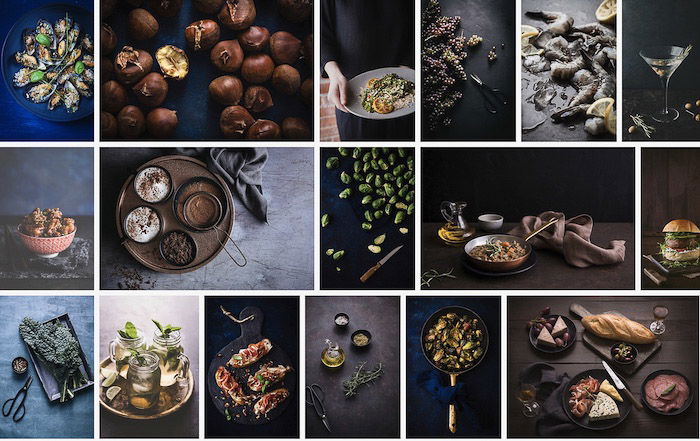[ExpertPhotography is supported by readers. Product links on ExpertPhotography are referral links. If you use one of these and buy something, we make a little bit of money. Need more info? See how it all works here.]
What’s the Right Web Hosting Platform for Your Photography Website?
When choosing a web hosting platform, it’s important to select a company with fast performance and good security, as well as accessible customer service. Wordpress is an extremely popular self-hosted web platform. It’s customizable and boasts great SEO. However, there are many companies that now offer web hosting, portfolio and resume templates, email and other tools in one package. Be sure to research all your options and the pros and cons of each so that you can make the right choice for your photography website. If you decide to go with WordPress, know that there are thousands of templates out there to choose from. Once you settle on one you really like, you can customize it to your exact specifications. However, you may choose to take a less techy route.
Use a Template to Highlight Your Work
Your site needs to clearly convey what kind of photography you specialize in and the essence of your style. As great as drag-and-drop template websites are, they have their limitations in terms of design. And they are not as customizable as a website built from the ground up. For example, I am a Photoshelter user. When I started with them, I used their East template. This is a mosaic-style template. Mosaic style templates are great for showcasing the work of photographers and have been very popular lately. One glance at the landing page and a potential client can instantly get a feel for your style. They don’t have to scroll tediously through each gallery. However, I found that with this template I couldn’t organize my images exactly how I wanted them to appear on my front page, as the template was set up in a way that it pulled random images from my galleries to feature there. I had no control over the appearance of my landing page. Or the first impression that I was giving to people coming to my site for the first time. I decided to change to a scroll style template. This allows visitors to see a large, attractive rendition of my images. They can also easily click on an icon in the bottom left-hand corner of the site. This way they can view each gallery in a mosaic tile format. One handy feature of a lot of these types of web builders is that you can test out how your images will display in the template before actually hitting publish. It’s easy to go back and forth before making your final decision.
Write a Blog to Reach Out to Your Followers
This is one tip that is often met with objection by photographers. After all, we are visual people and for many of us, writing is a weakness and a chore. Having a photography blog connected to your website can be extremely beneficial. For example, having a WordPress powered blog connected to your website can increase your SEO and website ranking. By writing blog posts, you’ll continually update your content and earn the favour of Google. Blogging is a powerful marketing tool that can help you connect to your ideal audience. It reminds your followers that you are a working photographer. And by appearing busy, you attract others’ attention. They assume you are good and want in on the action. So many photographers focus a lot of their marketing efforts on social media. But blogging actually helps you create an asset that drives more and more people to your work over time.
Stick to a Focused Theme for a Cohesive Look
A photographer’s website is considered their primary selling tool and the summary of their brand identity. Your photography website is your online portfolio. Your photography website will define how potential clients see you. A poorly designed website will call your professionalism into question. And it will discourage potential clients from contacting you for an estimate. The key to a successful photography portfolio is to have a theme or themes. And to keep them tightly focused. For example, I am primarily a food photography shooter. I shoot editorial and advertising for clients in the food space, as well as product packaging and lifestyle connected to food. I have also shot sports photography and corporate and personal branding, as well as events. Those genres are not my primary interest. So I don’t have images from those shoots on my website. I will take those kinds of gigs if I get them through referral, but I am not actively promoting myself as a photographer who specializes in those areas. My focus is food photography and this is what you see when you visit my website.
Limit the Number of Images and Galleries You Display to not Overwhelm Clients
In the case of your photography portfolio site, less is more. You want to demonstrate to clients what you’re good at as quickly as possible. Having too many galleries and images dilutes your message. You may shoot in a few photography genres. But stick to the ones that meet your business and career goals. If you want to do more sports photography, make sure your portfolio lines up with that. Create galleries around a single specialty. If you mostly shoot in one particular niche, find a way to organize your work into special themes. I have a gallery entitled “Food Dark” and another gallery “Food Light”. I have basically organized my images by mood and key. The interesting feedback I have had is that a lot of potential clients are really drawn to my dark and moody work and hire me for that. Even when this is not the style they are personally wanting. They are simply drawn emotionally to it as a body of work and its uniqueness. When it comes to the number of images you should include in your gallery, I recommend no more than 20. This is enough to give clients the gist of your previous work and style without overwhelming them.
Show Only Your Best Work to Catch Visitor Attention
It goes without saying that within your themes and galleries, you should only show your best work. It can be a difficult process to determine what this is! Sometimes your favourite shots are not as commercially viable as others in your portfolio. Or they don’t look cohesive with your other images. A great portfolio doesn’t mean continually updating your new work. It means presenting a concise collection of your images that speaks to your intended audience. It tells them about the kind of work you want to do and what they can expect from you. Surprisingly, photographers can be bad at deciding what their best images actually are. This is often because of the emotional connection we have with them. If you’re not sure what to include in your photography portfolio, ask trusted professionals in your network. Or pay for a portfolio consulting service from a suitable coach or a consulting company that specializes in working with photographers in this way. One such company is US-based Wonderful Machine.
Keep the Potential Client in Mind When Creating a Website
All of these tips are to help you keep your potential clients in mind. Hopefully, you know the kind of clients and brands you’d most likely work with. If you’ve done lots of portrait photograph but prefer doing weddings, focus on that. A client shouldn’t have to guess what you’re good at. Even in your chosen niche, make sure that your portfolio is tight and signals what you do best and want to keep doing. I do a lot of food packaging work, but I prefer doing editorial. The bulk of my online photography website demonstrates that. Don’t try to be all things to all people.
How to Choose Images for Your New Website
Now that you know the top tips that will help you build an outstanding photography website, it’s time to choose the images that will actually be a part of your online portfolio. Always start with your most commercially viable images and lead with them. Focus on telling a story with your photos. Your galleries can have a narrative feel with images connected by theme. Or they can hang together with common elements in composition, mood, or color. The overall feeling should be cohesive but not repetitive. Show what you need to and no more than that. An exercise that I recommend for photographers putting together their first photography website or portfolio of work is to narrow down the images they are considering. Then have them printed into 4X6 photos. Spread all of the images out of the floor or pin them to a wall and start to cull them more ruthlessly. Look for the ones that hang together based on the criteria you have determined until you have chosen your final edits. Seeing your images in tangible form makes the task easier to process. It’s worth the extra time and effort.
Conclusion: Street Photography Quotes
Are you ready to build your first photography website? There are a lot of great resources out there to help you create a stunning online portfolio. You’ll build a web presence that will help you get your name out there. By following these best practices, you’ll be getting your first clients in no time.









